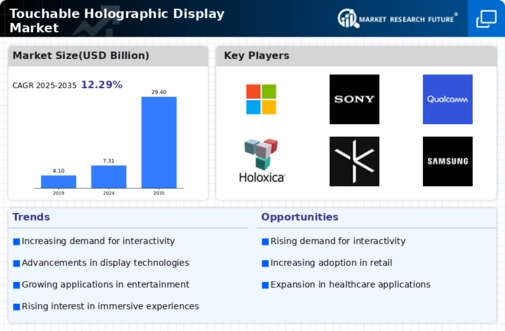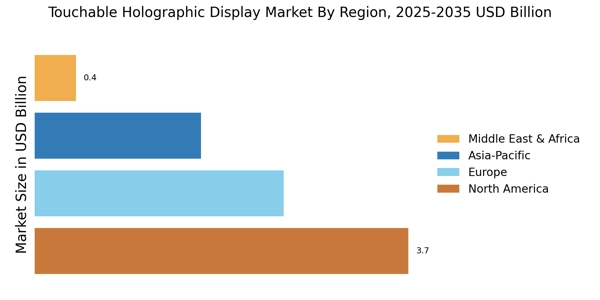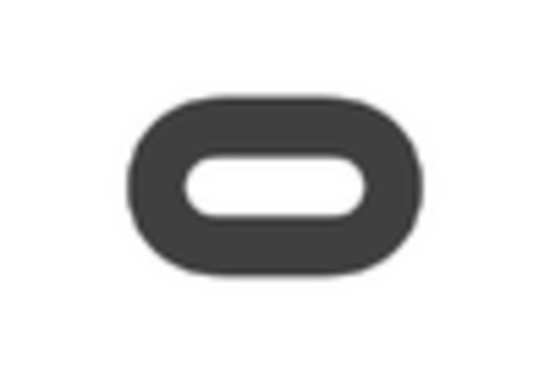Advancements in Display Technology
Technological advancements in display technology are significantly influencing the Touchable Holographic Display Market. Innovations in optics, sensors, and projection techniques have led to the development of more sophisticated holographic displays that are not only more affordable but also more accessible to various sectors. For instance, the integration of augmented reality with touchable holographic displays is enhancing user experiences across multiple applications. Market analysis suggests that the overall display technology market is projected to reach USD 200 billion by 2026, with a substantial portion attributed to holographic solutions. These advancements are likely to attract investments and foster collaborations among tech companies, further propelling the growth of the touchable holographic display segment.
Expansion of Smart Home Technologies
The expansion of smart home technologies is emerging as a significant driver for the Touchable Holographic Display Market. As consumers increasingly integrate smart devices into their homes, the demand for intuitive and interactive interfaces is rising. Touchable holographic displays offer a futuristic solution for controlling smart home systems, providing users with a visually appealing and user-friendly experience. Market forecasts suggest that the smart home market will reach USD 150 billion by 2027, with a notable portion of this growth attributed to advanced display technologies. The integration of touchable holographic displays into smart home ecosystems could enhance user engagement and streamline device management, thereby driving further adoption of this innovative technology.
Growing Demand in Retail and Advertising
The retail and advertising sectors are increasingly adopting touchable holographic displays, which is a key driver for the Touchable Holographic Display Market. These displays offer unique opportunities for brands to engage customers through interactive and visually striking presentations. Market data indicates that the use of holographic displays in retail is expected to grow by over 30% in the next few years, as businesses seek innovative ways to capture consumer attention. The ability to create dynamic advertisements that allow for customer interaction is transforming traditional marketing strategies. As retailers and advertisers recognize the potential of touchable holographic displays to enhance brand visibility and customer experience, the demand for this technology is likely to surge.
Rising Demand for Interactive Technology
The increasing demand for interactive technology is a primary driver of the Touchable Holographic Display Market. As consumers seek more engaging and immersive experiences, industries such as retail and advertising are adopting touchable holographic displays to enhance customer interaction. This trend is reflected in market data, which indicates that the interactive display segment is expected to grow at a compound annual growth rate of over 25% in the coming years. Companies are investing in innovative solutions that leverage touchable holographic technology to create captivating environments, thereby driving the market forward. The ability to manipulate holograms with touch adds a layer of interactivity that traditional displays cannot offer, making this technology increasingly appealing to businesses aiming to differentiate themselves in a competitive landscape.
Increased Investment in Research and Development
The Touchable Holographic Display Market is witnessing increased investment in research and development, which serves as a crucial driver for its growth. Companies are allocating significant resources to explore new applications and improve existing technologies. This focus on R&D is expected to yield innovative products that meet the evolving needs of consumers and businesses alike. According to industry reports, R&D spending in the display technology sector is anticipated to rise by approximately 15% annually. This influx of investment is likely to accelerate the introduction of advanced touchable holographic displays, thereby expanding their market presence and applications across various industries, including education, healthcare, and entertainment.


















Leave a Comment